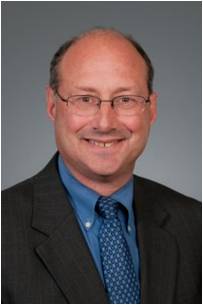Robert Brown
Managing Director, Perkins+Will
Age: 64
Industry experience: 44 years
Robert Brown leads the 140-member Boston office of architects Perkins + Will, which is working with Massachusetts Institute of Technology on its 1.8-million-square-foot Kendall Square redevelopment and Harbinger Development on the Marine Wharf Hotel in South Boston. Brown’s career in the industry began during high school summer vacations doing drafting for a custom home architect in Toledo, Ohio. After college, he took a job for a hospital design firm in Cincinnati before moving east in 1981. A former president of the Boston Society of Architects, Brown was named to lead Perkins + Will’s 140-employee Boston office in 2012.
Q: Now that we’re several years into the office amenities craze, what are architects learning about what works and what doesn’t?
A: Food (venues) have always existed, but they’re much more integral: the food trucks, and the quality of food. Instead of the cafe or restaurants, they’re having three or five different vendors coming in with ethnic foods. We used to always separate the lobby from whatever retail there would be. Those walls are coming down and you’re walking into a food or a retail environment and there’s an office building that’s a part of that.
The other thing that’s interesting is the old conference center which went away for a while is coming back. There’s a desire to have meeting space, but they don’t necessary do it in the office, and they don’t want the 25-person table because they don’t use it that often. Fitness is still important, but it seems like it’s moving toward health and wellness. On one job, we had a 1,000-square-foot fitness gym, and within six months we took half of it out and put in (Nintendo) Wii stations and other mental games. And then six months after that they got rid of all the bikes and weights because people said, “Don’t worry. I’m going to go to my gym. I wouldn’t mind a shower if I’m going for a run or so I can ride my bike in. But I’m not going to come down here in the middle of the day for 15 minutes.”
Q: Roof decks and terraces have become almost a requirement now in office and multifamily towers too.
A: That’s one of the most interesting changes that have happened. All of a sudden these roof terraces are popping up. The first one I did was at One International Place for Scudder Stevens and Clark in the mid-1990s. Then we redid it when they moved out and Eaton Vance came in. We were just doing one on the 34th floor of One Post Office Square. And there’s all sorts of things that happen out there. You’re seeing different furnishings. There are meeting spaces, making sure there’s power, wifi available, firepits and grills and putting video monitors out there so for that one day of the year that’s perfect, you could have that meeting.
Q: What were some of the design challenges with the site for the Marine Wharf hotel at 660 Summer St.?
A: The thing that’s interesting is (Harbinger Development) is looking at it as a retail building with a hotel in the middle. The Reserved Channel runs right by it and anything over 250 feet (tall) has to step back, so there’s a 45-degree line that’s coming right off the Reserved Channel. It gives us these great terraces that look toward the south and over the channel that are really spectacular. The terraces are on every floor up to the 14th floor. We’ve got a pool and fitness area inside on the roof and 5,000 square feet of exterior deck.
Q: With resiliency a growing concern in coastal cities, Perkins + Will designed an interesting housing prototype model called the Floatyard. What was the impetus for that?
A: Ed Nardi from Cresset Group and my previous design director were sitting around looking at the harbor saying, “Look at all that space out there.” There’s a dock in front of Constitution Wharf in Charlestown and the problem is that the pier is rotting. The cost to take it down is pretty extraordinary. The environmental impact to rebuild it is really expensive. What can we do? What if it was floating? They talked to some shipbuilders in New Bedford and they said it would be spectacular. This was all on spec. We didn’t have any specific project. It’s a clever design. It was just one of those projects that needs a big push.
Q: Lots of legal and regulatory issues?
A: I think there would be a thousand. Who owns the ocean floor? But it’s a very clever idea.
Q: As more multifamily developers look at automated parking systems, is there a consensus about industry standards?
A: Honestly, I think the driverless car system is going to be there before the automated parking guys can figure out how to not crush the BMW.
Q: What’s the fastest growing side of the business?
A: The fastest growing business and the most changing businesses are the biopharmas. The speed with which those companies are changing and have to increase staff. They go from a 50-person company to 5,000 people when one drug gets approved. The other side is the science is not as invasive as it used to be. A lot of the lab work is computational. There used to be 70 percent lab and 30 percent work environment. A lot of the stuff is very automated. The experiments are set up and they go back to their offices.
Brown’s Five Favorite Vacation Spots:
- Tulum, Mexico, for the food
- Turks and Caicos, for the water
- Tuscany, for the landscape
- Wellfleet, because it’s heaven in our back yard
- Bora Bora, for the mystery of it all




 |
| 

